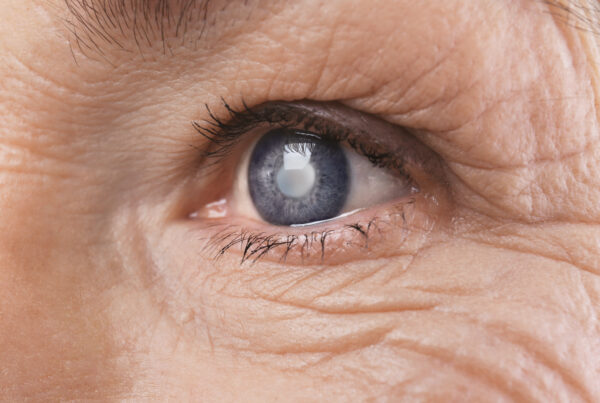
You can tell all THAT just from my eye exam?!
Last month we opened a discussion on some of the general health conditions that can be diagnosed during your comprehensive eye exam. If you haven’t already read this please start with “Surprising Health Conditions Diagnosed on the Routine Eye Exam – Part 1” of this series, which will give you some introductory information about how the different structure of the eye provide a “window” into the health of the rest of our bodies. In that installment we discussed how your eye examination can lead to the diagnosis of some rather serious diseases of the brain.
READ PART ONE OF THIS SERIES HEREThis month I’d like to continue that discussion by taking a closer look at the information that the small blood vessels in the back of your eye can give us about your general health. Changes in the number, size, shape, or health of these blood vessels can help us diagnosis and monitor many systemic conditions including:
High Blood Pressure
High blood pressure is one of the most common health conditions in the world affecting about 1 in 5 Americans. Uncontrolled high blood pressure causes damage to the small blood vessels that go to the tissues throughout our bodies leading to things such as heart attack, stroke, and even death. The only place that these small blood vessels can be directly seen is in the back part of the eyes.
Over long periods of time hypertension leads to narrowing or kinking of these small blood vessels. If bad enough this can cause swelling or bleeding in the back of the eye that significantly affects vision. Identifying these changes allows us to both diagnose high blood pressure in patients without a previous diagnosis and to evaluate severity in patients who already have known hypertension. By alerting their primary care physician and getting the blood pressure under control we can reduce the risk of these serious associated health conditions.
High Cholesterol
Cholesterol is a waxy substance that is found in all cells throughout our body. Not all cholesterol is bad. In fact, our body needs some cholesterol to build cells and transport the nutrients we eat. Our liver actually produces all of the cholesterol that our bodies need. The excess cholesterol comes from our diet, mostly by eating animal products such as meat and dairy. Over the years this cholesterol builds up in our body and can combine with other substances to form a thick hard deposit on the inside of our blood vessels. This is known as atherosclerosis and increases the risk of heart disease, peripheral artery disease, and strokes.
Cholesterol deposits can show up in two different places in the eye. First, it can be seen on the front clear windshield of the eye, called the cornea. This can cause a whitish ring to develop in the area just in front of the colored part of the eye known as the iris. Some patients with dark brown eyes will actually notice this themselves and will come in concerned about their eyes “changing colors”. In fact, their eye color remains the same, but it just looks lighter or bluer in color due to these cholesterol deposits within the clear windshield in front of the iris.
The second place we may see cholesterol is within the small vessels in the back of the eye. Significant cholesterol build-up in the large carotid vessels of the neck can lead to problems when pieces of this cholesterol break off and flow within the blood stream. When these bit of cholesterol travel through the tiny blood vessels of the eye they can get stuck leading to decrease in blood flow and permanent damage. If the same thing happens in the brain it causes a stroke. In the eye it causes a sort of “stroke of the eye” known as a retinal artery occlusion. When your eye doctor looks in your eye with high magnification, they can actually see these tiny cholesterol plaques.
Diabetes
About 1 in 12 people in the world have diabetes. Like high blood pressure, uncontrolled Diabetes leads to changes in the small blood vessels in the back of the eye that can be seen on your eye exam. The changes can range from small out-pouching of the blood vessels to severe swelling, bleeding, scar-tissue formation, and retinal detachment. In fact, Diabetes is one of the leading causes of blindness in the United States and around the world. As a result, any patient with Diabetes is recommended to have a screening eye exam at least once per year. When a Diabetic patient is seen by any of our SureVision doctors for a complete examination we will automatically send a letter to your primary care doctor to inform them of the presence and status of any diabetic eye damage or lack thereof. By knowing how your Diabetes is affecting your eyes they can better manage your disease. For more information on Diabetic eye disease please read our previous blog post entitled, “How Does Diabetes Affect Your Vision?”.
If you have a strong family or personal history of any of the above conditions and would like to schedule a detailed evaluation with one of the doctors at SureVision Eye Centers, please contact us or call 314-921-2020.



